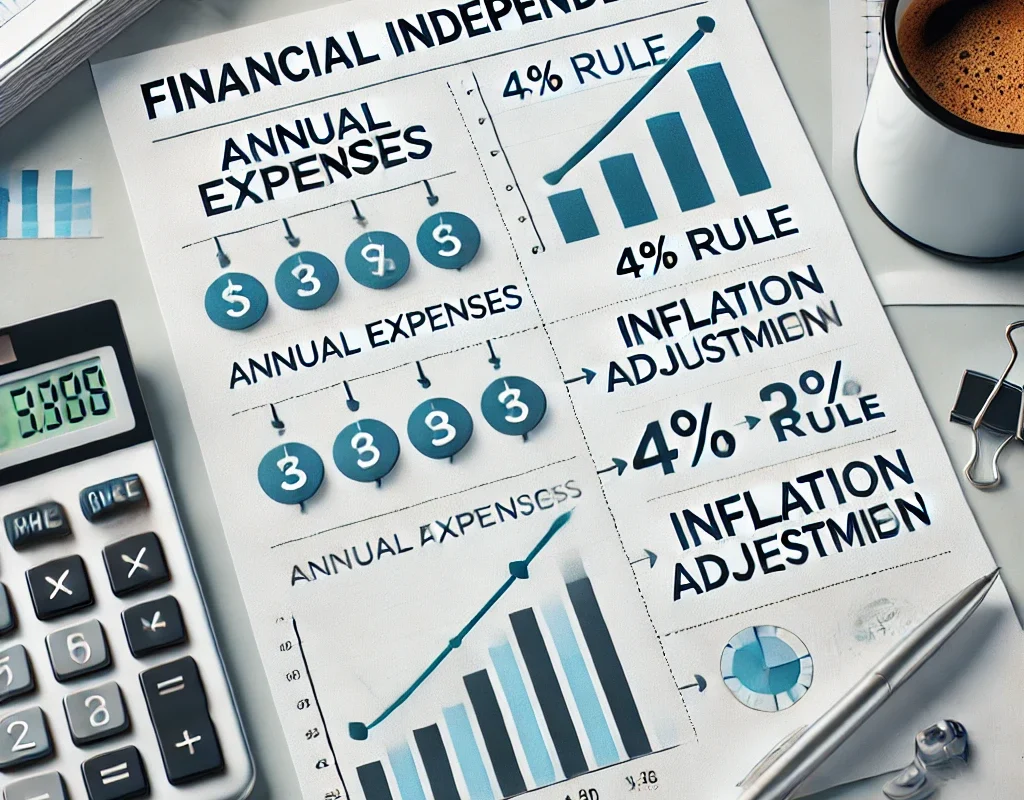Meta Description: Learn how to calculate your Financial Independence Number and take control of your future. Understand the steps toward achieving financial independence with ease.
The journey toward financial independence is often viewed as the ultimate financial goal. It represents a point where work becomes optional, and you’re free from financial constraints. But how do you know when you’ve reached that point? Enter your Financial Independence Number—a figure that signifies the amount of savings or investments you need to live off without working. This number is not just a random figure; it’s an essential part of financial planning and can give you a clear target for your future.
Introduction
In a world where financial freedom is increasingly prioritized, knowing your Financial Independence Number (FIN) is the compass that will guide you through. This number tells you exactly how much money you need to live off without relying on a paycheck. While the concept may sound daunting, breaking it down into clear steps makes it achievable for anyone.
Calculating your FIN involves understanding your current expenses, considering inflation, and factoring in investment growth. It also involves considering your desired lifestyle in retirement. The beauty of this process is that it gives you control. Instead of drifting financially, you’ll know exactly what to aim for.
Now, let’s dive into understanding and calculating your Financial Independence Number.
Understanding the Financial Independence Number
The Financial Independence Number refers to the total amount of money you would need in investments or savings to generate enough income for you to cover your expenses for the rest of your life. It’s the key to unlocking financial freedom, enabling you to stop working when you want, not when you have to.
While different strategies exist to calculate this figure, most methods revolve around the concept of “safe withdrawal rates.” A safe withdrawal rate refers to the percentage of your investments you can withdraw annually without depleting your funds too early. For many, this figure is 4%, which stems from a popular rule of thumb known as the 4% rule.
The 4% Rule suggests that you can safely withdraw 4% of your investment portfolio each year without running out of money for at least 30 years. Based on this, your Financial Independence Number can be calculated by multiplying your annual expenses by 25.
Why Knowing Your Financial Independence Number is Important
Knowing your FIN gives you clarity and motivation. It provides a concrete financial goal, helping you stay disciplined and focused in your journey toward financial independence. Here are a few reasons why calculating your FIN is crucial:
- Goal Setting: It gives you a measurable target to work toward.
- Spending Awareness: By understanding your expenses, you’re more aware of your spending habits.
- Peace of Mind: With a clear financial roadmap, you can achieve financial freedom sooner, reducing financial stress.
- Better Decision Making: Knowing your number helps you make more informed decisions on investments, savings, and lifestyle choices.
How to Calculate Your Financial Independence Number
Calculating your Financial Independence Number is a straightforward process. It boils down to a simple formula:
Annual Expenses × 25 = Financial Independence Number
But before you get to the final number, you’ll need to take a few important steps. Here’s how you can calculate your own FIN:
Step 1: Estimate Your Annual Living Expenses
The first step in calculating your Financial Independence Number is to determine your current living expenses. This figure represents what you spend each year and serves as the foundation for calculating how much you’ll need in retirement.
To get started:
- Track Your Spending: Review your monthly expenses, including rent/mortgage, groceries, utilities, entertainment, insurance, and more.
- Account for Future Expenses: Factor in costs that may change in retirement, such as travel, healthcare, or hobbies.
A good rule of thumb is to look at your current expenses, adjust for lifestyle changes you anticipate in retirement, and come up with a comprehensive annual figure.
Step 2: Factor in Inflation
Inflation is the slow erosion of your purchasing power over time. A dollar today will not be worth as much in the future, so it’s important to account for inflation when calculating your FIN. Historically, inflation averages around 2-3% annually. When you’re projecting your future expenses, increase them by this percentage to maintain your purchasing power.
For example, if your current annual expenses are $50,000, and you expect to retire in 20 years, your expenses might look more like $90,000 by then if inflation averages 3%.
Step 3: Use the 4% Rule to Determine Your Financial Independence Number
Now that you’ve estimated your annual living expenses (adjusted for inflation), use the 4% rule to calculate your FIN. This means you’ll multiply your annual expenses by 25.
For instance:
- If your annual living expenses are $50,000, multiply that by 25.
- $50,000 × 25 = $1.25 million
In this scenario, $1.25 million is the amount of money you would need in investments to withdraw $50,000 annually, assuming a 4% withdrawal rate.
Step 4: Consider Other Income Sources
Not everyone’s retirement income will rely solely on investments. You might have other income sources, such as Social Security, pensions, or rental income. Subtract any expected income from your Financial Independence Number.
For example:
- If your FIN is $1.25 million, and you expect $20,000 a year from Social Security, you can reduce your FIN by the amount that income covers.
- That would leave you needing $30,000 a year from investments, so your new FIN would be $30,000 × 25 = $750,000.
Investment Strategies to Reach Your Financial Independence Number
Once you have your Financial Independence Number, the next question is, “How do I get there?” The answer largely depends on your time frame, risk tolerance, and investment strategy. Here are some common strategies to help you reach your number:
Invest in Low-Cost Index Funds
Index funds are a popular choice for achieving long-term financial independence. They offer diversification and low fees, allowing your money to grow steadily over time. The stock market has historically provided returns of about 7-8% annually (after inflation), which can significantly help in reaching your FIN.
Diversify Your Investment Portfolio
Diversification is key to protecting your investment portfolio from volatility. Spread your investments across different asset classes, such as stocks, bonds, and real estate. This reduces risk and ensures that if one market sector performs poorly, others might still provide positive returns.
Maximize Tax-Advantaged Accounts
Make use of tax-advantaged accounts such as 401(k)s, IRAs, and Roth IRAs. These accounts provide significant tax benefits, allowing your investments to grow tax-free or tax-deferred, depending on the account type.
You Can Also Read : How to Build an Emergency Fund for Financial Independence
How Your Financial Independence Number Relates to Early Retirement
For those pursuing early retirement, commonly referred to as FIRE (Financial Independence, Retire Early), calculating your FIN is a critical part of the plan. The FIRE movement centers around aggressive saving and investing, often with the goal of retiring well before traditional retirement age. Your Financial Independence Number becomes even more important here because you’ll likely need to cover more years without earned income.
While early retirees often aim to save up to 50% or more of their income, the principles of calculating your FIN remain the same. Understanding how much you’ll need to live comfortably without working ensures that you can maintain your lifestyle while being financially independent.



